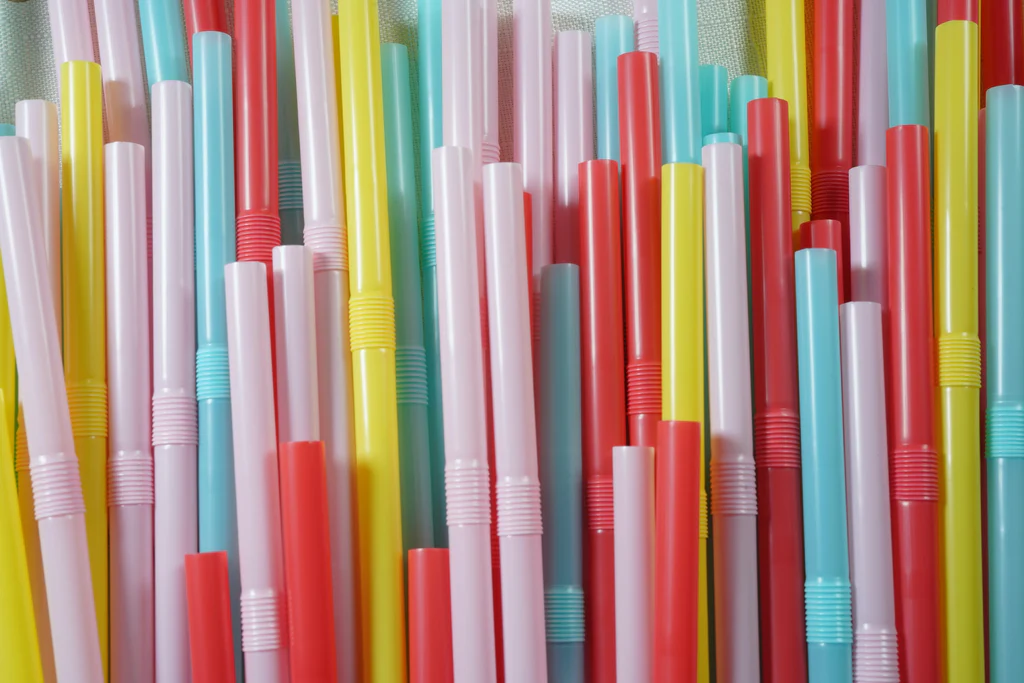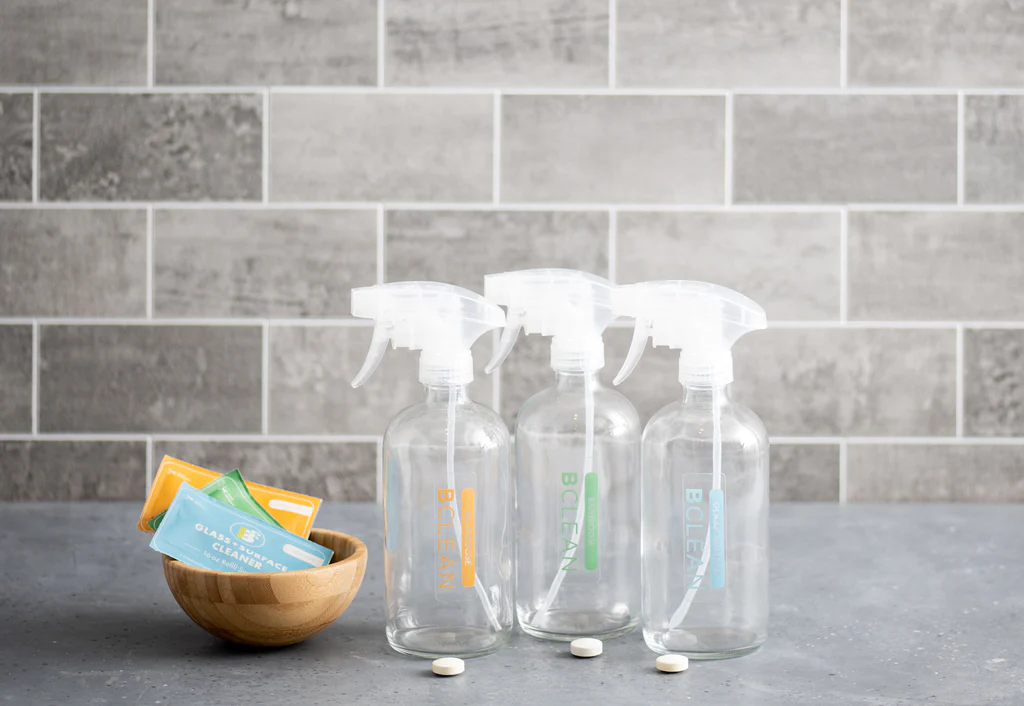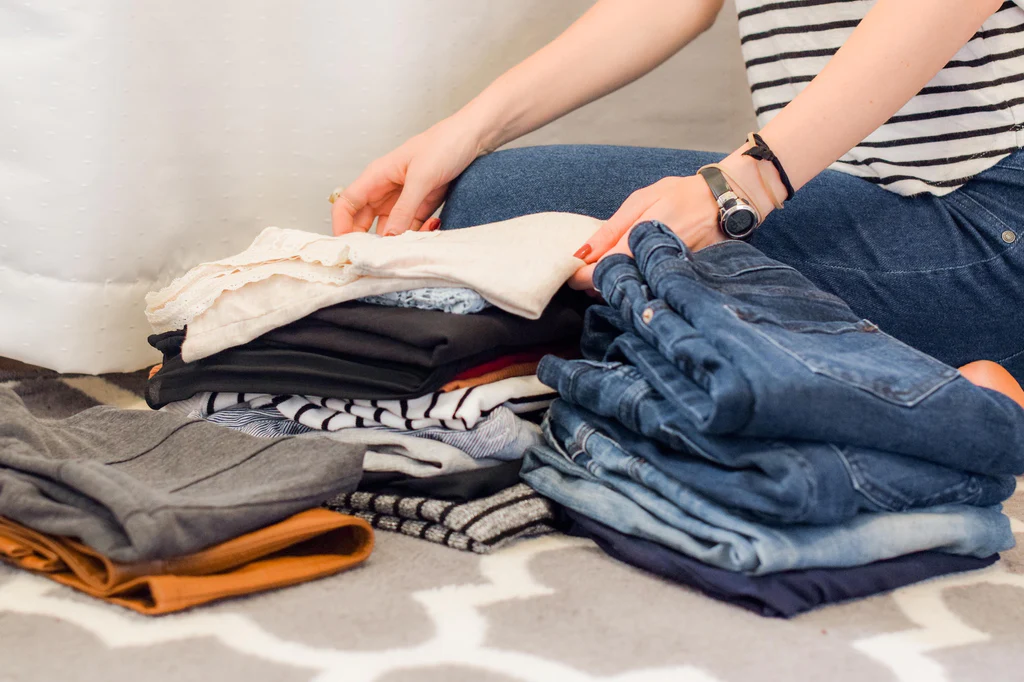Tips To Reduce Plastic In Your Home
Living Without Plastic: Tips For A Plastic-Free Home
Learning how to live without plastic can feel like an impossible task, but it’s easier than you may think to cut back on how much you consume. The majority of the most polluting plastic products can be replaced with a more sustainable option that works for both your family and the planet. And by changing your habits you can help reduce U.S. plastic waste which averages 37.8 million tons a year (the most per CAPITA of any country). U.S. Companies create 76 million pounds of plastic packaging every day. Yet only 9% of all plastic is recycled. The rest? Ends up in nature and our oceans.
Treating plastic like a bad habit that needs to be kicked is a lifestyle pledge being shared by more and more consumers, horrified by the tens of millions of metric tons of plastic created worldwide each year, much of it in the form of single-use items like straws, that end up in landfills or, worse, the oceans.
Wondering how to make a plastic-free commitment? Going plastic free usually starts with cloth bags and straws. But the tips to follow will set you up for a life without plastic and a lower footprint on the planet. Go step by step—don’t try to do everything at once so you don’t get overwhelmed by it all.
First up, do a waste audit to be cognizant about what leaves your home. A “waste audit” is a fancy term for looking at your trash and recycling containers and taking note of what’s there. Every time you reach for the can, pay attention to what you’re putting in. Do you have an abundance of salad clamshells? Snack bags and cereal box liners? Milk jugs or juice containers? Once you know what you are sending to the curb, you can tackle the most frequently spotted items first.
#1: Reusable Shopping Bags
This is one of the easiest things you can do. Simply take 3-4 reusable bags with you whenever you go shopping. If you don’t have a healthy supply of cloth bags or reusable totes, pick yourself up a few. There are tons of options. Keep them in your car so they are always on hand. And one more thing: reusable bags are not just for groceries! Carry them for all your purchases, from electronics to clothing.

#2: Plastic Straws
Plastic straws have been on the “bad list” for a while now. Pick yourself up a couple straws made of sustainable materials: compostable straws, metal, bamboo, silicone there are so many options. Final Straw provides great options that can nix the plastic and can stash away subtly. We prefer the metal straws as long as you have one of the slim cleaner brushes handy.
#3: Drinking Vessels
Replace single-use water bottles with reusable bottles or tumblers. A single-use plastic bottle takes up to 1,000 years to degrade in a landfill. Even then, it releases pesky microplastics that seep into our water, food, and natural environments! Plastic water bottles are expensive, do sketchy stuff when left in hot temperatures, and require that you keep buying more. A reusable water bottle simply makes life easier and more affordable.
As for the notorious and glorious to-go’s at the coffee shop. While the cups appear to be paper, they aren’t paper! They are lined with non-recyclable plastic film. That’s how hot coffee can stay in there without obliterating the cup. Get yourself a reusable insulated tumbler -if you don’t have one already- or bring your own mug to your next coffee stop!
#4: Groceries
Once you wake up to the plastic problem, you see it everywhere: in jars of peanut butter and bags of grapes, in tubes of toothpaste and Tupperware containers, in bottles of Dawn dish soap and Tide laundry detergent, in the wrappers of Doritos chips and the lining of milk cartons. According to the Environmental Protection Agency, 30 percent of household waste in the U.S. comes from packaging. To navigate the consumer minefield, plastic purgers develop mental maps of places where they can shop. And rather than see it as a huge inconvenience, they treat living plastic free as a fun game. It may take some time, but you learn where to get milk in a glass bottle, or which health-food store lets you grind your own peanut butter. Many grocery stores have unpackaged fruits and veggies on the shelves and have bulk bins full of pantry staples like grains, dried beans, and nuts. Ask your store if you can fill reusable containers from home. Many will allow fabric bags, glass jars, silicone bags, and more, as long as you get them weighed before you fill them up. If you can’t bring your own, you can refill the provided plastic bags or containers over and over. Another solution is farmers’ markets, which exist year-round in many states.

#5: Plastic Food Storage
Limit your reliance on plastic food storage and replace single-use plastic wrap and bags and opt for a reusable alternative. Swap cling wrap with reusable beeswax foodwraps and single-use zipper bags with silicone storage bags. Silicone bags can also double as cooking tools—throw them in the oven or microwave, or use for some sous vide meals.
Rather than throwing out what you already have, take good care of your existing plastic containers by hand-washing them and keeping them out of the microwave. Slowly replace your old plastic containers as they break. When it’s time for a new one, reuse glass jars to store leftovers (you can even freeze food in them!) or upgrade to glass or metal storage containers.
#6: Single-Use Takeout Items
If you’re ordering delivery or takeout a lot lately, make it clear you don’t need plastic cutlery or condiments, and consider asking for your salad dressed to prevent them from wasting a single-use plastic container. A lot of plastic that does sneak into the to-go bag gets tossed out without even being used. Getting a drink? Bring a reusable drinking vessel when you order out and ask if you can fill it with your drink.

#7: Plastic-Free Cleaning Products
Cleaning up your household cleaners is a great way to start cutting out single-use plastic from your home. Refilling is the new recycle. Instead of buying a new bottle every time you run out, refill the containers you already have or reusable glass bottles with bulk refills or cleaning concentrates.
When your plastic dryer sheets run out, replace them with liquid fabric softener or wool dryer balls that speed drying time by up to 25 percent while reducing static.
Use natural cleaning cloths and scrubbers instead of plastic scrubbers and synthetic sponges. Compressed natural cellulose sponges are often sold without any plastic packaging because they don’t need to be kept moist; they expand when wet.
#8: Pampering and Personal Care Products
Every single bottle of shampoo, conditioner, body soap, lotion likely fall into that same plastic pollution category. The shampoo bottles thrown out every year in the U.S. could fill 1,164 football fields. And if just one person switches to using refillable shampoo bottles instead of plastic, that’s 600 plastic bottles diverted by just that single person over their lifetime. Not too shabby! Slowly replace personal care products with those packed in glass, metal, or cardboard as your existing products run out.
And it doesn’t stop at shower products.Take a toothbrush for example. We all change them roughly every three months (or so recommends your dentist), which means we’ve each contributed nearly 120 toothbrushes to our local landfill. Switching to an eco-friendly toothbrush that’s compostable means 100+ toothbrushes you aren’t throwing in the trash anymore.
Disposable razors and razor blades are two of the biggest contributors to plastic waste. Although you need to take the time to master them, using a safety razor ensures you will never use disposable plastic razors again.
You can find a zero waste deodorant. Organic Essence packages its body lotions in compostable cardboard jars and its lip balms in ingenious cardboard tubes that squeeze from the end.
Next, switch up your feminine care products. Opt for tampons with cardboard or recyclable applicators or no applicator. Go even further and instead of disposable tampons, pads, and liners, try out period underwear, a silicone menstrual cup, or reusable pads and liners.
From shampoo and conditioner bars, to plastic-free razor cartridges, to moisturizer and eye shadow, there are plenty of new planet-friendly favorites waiting to be discovered.

#9: Plastic-Free Clothing
So much new clothing these days is made from synthetic materials with names like: polyester, acrylic, lycra, spandex, nylon. In other words, plastic fabric. And all synthetic fabrics create microfiber pollution when laundered. When buying new clothes, look for organic cotton, hemp, ethically-raised wool, and other natural fibers. Or consider a company that puts human and environmental health first. In 1993, Patagonia was the first retailer to use recycled materials to make recycled polyester for products like their Nano Puff Jacket. Girlfriend Collective uses recycled plastic bottles to make their activewear sets.
Look for plastic-free shoes. For example, Feelgoodz flip flops are made from natural rubber rather than plastic.
#10: Plastic-Free Everyday Products
Doing a little research, you can find companies like Pela, who are leading the way in the way in sustainable product design, changing the conversation by creating tech products like their Pela case, iPhone, and AirPod cases made from bioplastics that can be thrown in your own home compost at the end of their life and they’ll compost… on their own… just right there.
Use a blender made of glass. If you find yourself needing to purchase a new blender in the future, try and go for a glass alternative if possible.
Buy electronics second-hand whenever possible. Buying second-hand electronics eliminates the waste that ends up in landfills and decreases the need to send these products for recycling. It also decreases the amount of pollution and greenhouse gasses emitted to create these products.
There’s no need to replace your plastic ice trays immediately. But if they break and become unusable, replace them with stainless steel or silicone ice trays.
Use plastic-free trash bin liners. These plant-based bin liners are certified compostable and will break down to their natural cellulose origins.
Avoid non-stick cookware. Cookware coated with Teflon or other resins give off toxic perfluorochemicals when heated. Replace it with stainless steel and cast iron.
Look for outdoor furniture made from recycled plastic. Buying recycled plastic furniture contributes little to your carbon footprint and when you are through using it, it can be recycled again.

#11: Plastic-Free Pet Supplies
The collective plastic pawprint is something we should not ignore. Poo bags, food packaging, bowls, chewy toys—from feeding and entertaining them to carrying and cleaning up after them—your pet can end up fetching you mountains of unwanted plastic waste.
Look out for toys made from hemp, bamboo and wood from sustainably managed forests. You can find stuff like hemp dog bones, canvas squeaker toys and sisal-wrapped scratching posts.
Use glass or stainless steel food/water bowls. They are healthier for your pet as with stainless steel there is no risk of leached chemicals from plastic.
Pick up waste using old newspaper. Or use compostable poop bags, but make sure you dispose of them in the correct way (ie compost them as they need oxygen and light to break down). They’re more environmentally friendly than standard single-use plastic ones—the compostable bags are made from plant starch instead of climate-changing petroleum.
Avoid plastic food pouches. Wet food for dogs and cats is a bit messy. It’s obvious why single servings wrapped in plastic-aluminum pouches have become popular. So popular, that billions of them are ending up in landfill each year. Fewer than 1 in 20,000 food pouches are recycled, according to an article published in The Times newspaper—making them more of a burden than single-use coffee cups.
As much as we love our pets, we don’t want to be wearing them around the office or on a night out round town. But those rollers that remove pet hair from clothes come with plastic-coated sheets that we end up chucking in the bin. Thankfully there is an alternative way to remove hair from fabrics and furniture—the rubber glove solution.
#12: Avoid The Worst Types of Plastic
If you do nothing else, try to steer clear of Polyvinyl Chloride (#3 PVC), Polystyrene (#6 PS), & Polycarbonate (#7 Other). PVC is found in many, many products and causes a whole host of environmental problems. PS contains styrene, which is toxic to the brain and nervous system. PC contains BPA. Note: #7 is a catch-all for many types of plastic that don’t fit into the first six categories. Biodegradable plastic is also labeled #7. So when in doubt, ask.
Making An Impact
By living with less plastic, you’re making a positive impact on our planet right now and you’re simultaneously making it better for future generations. As more people start making the change, this impact will grow exponentially, helping to clean up our oceans, reduce the amount of waste in our landfills, and lessen the effects of global warming.
